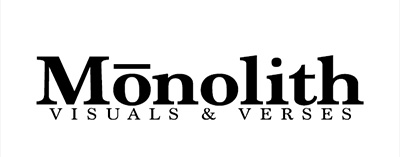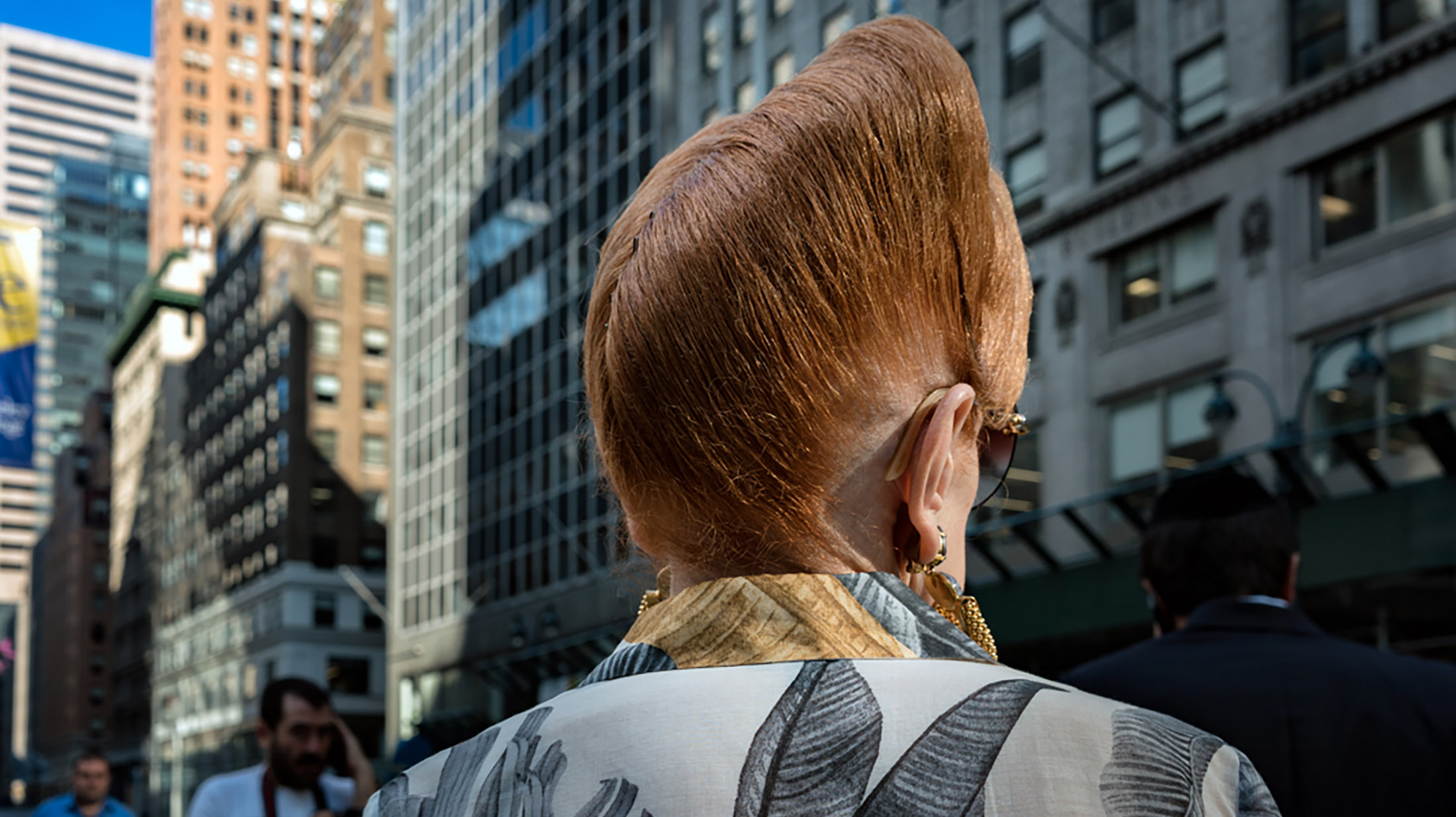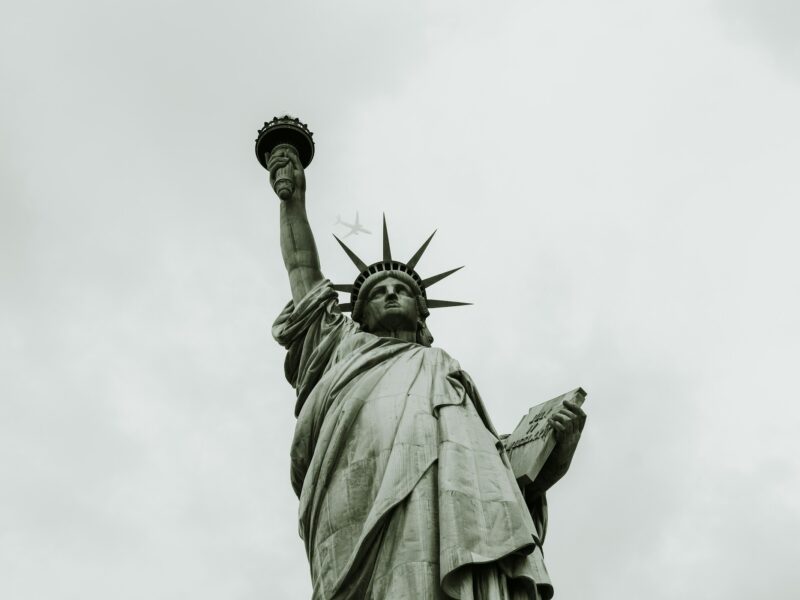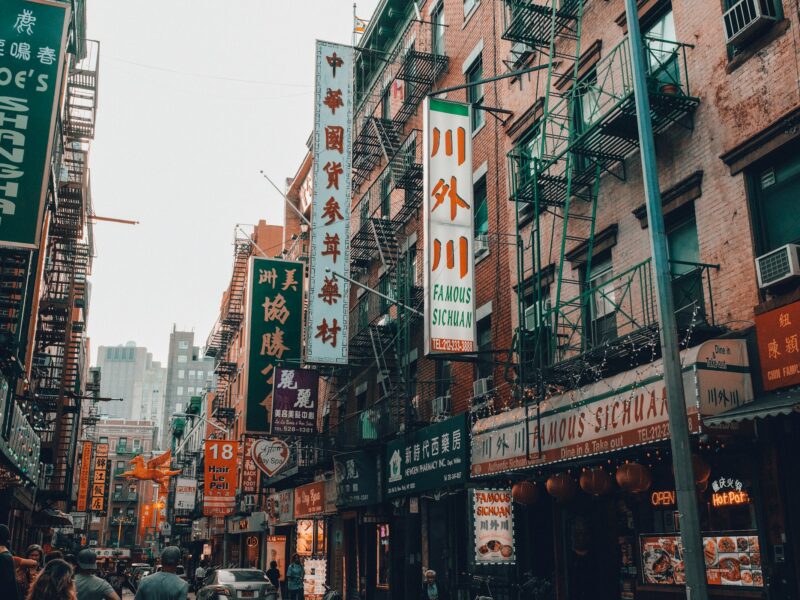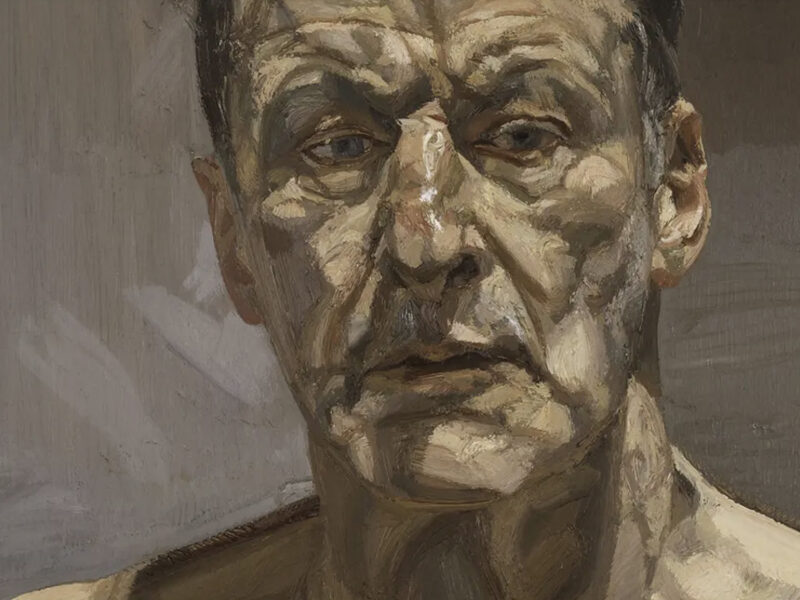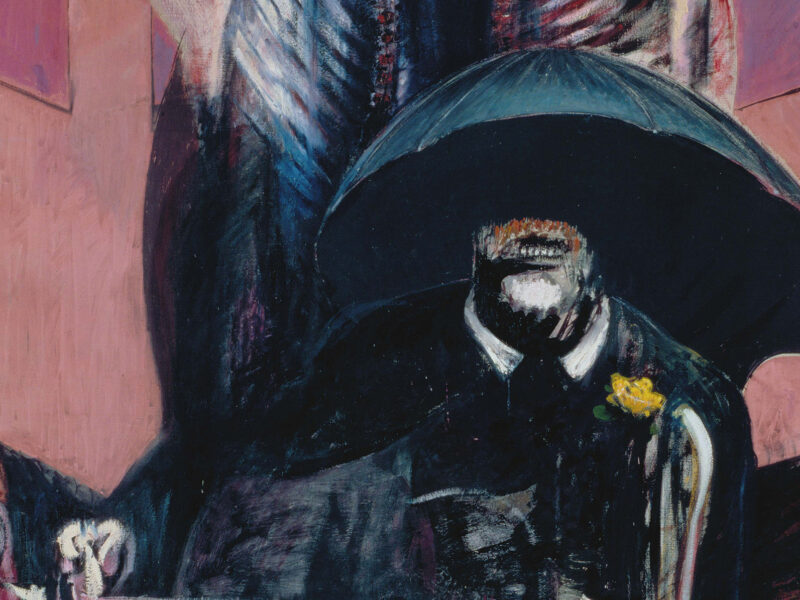Interview | B Jane Levine
Barbara Jane Levine was raised in the suburbs of New Jersey, a short bus ride from New York City. She has a PhD in Biochemistry from Columbia University, but left the field of molecular biology research to raise her family. After leaving research, she took an interest in photography and began taking classes at ICP and other online platforms. She further honed her skills through many photography trips all over the world. Her photography spans many genres including street photography, landscape photography and long exposure cityscapes. Our contributor Josef Goetz had the chance to interview Jane about her practice of photography, exploring its meaning conceptually and technically, as well as getting an overview of the artistic influences behind her work.
People who double my iQ say that at the end of each artistic research there is always the concept of “beauty.” An hidden entity that sometimes turns out in places and in the most unexpected expressions. Do you agree with that, and how many times do you think you have met beauty and captured in your shots?
Robert Adams stated in an essay in Beauty in Photography, “If the proper goal of art is, as I now believe, Beauty, the Beauty that concerns me is that of Form. Beauty is, in my view, a synonym for the coherence and structure underlying life.” He continues further on “ If the goal of art is Beauty and if we assume that the goal is sometimes reached, even if always imperfectly, how do we judge art? Basically. I think, by whether it reveals to us important Form that we ourselves have experienced but to which we have not paid adequate attention. Successful art rediscovers Beauty for us.” After I read this essay multiple times, I was struck with this eureka moment as I absorbed his insight into the essence and definition of beauty as it pertains to art and photography. The image, Red Upsweep, has light, shadow, color, lines, patterns and subject that create an image that has a harmonious form as an entry point into the frame. The caption for this image describes the sense of beauty I experienced as I created this image. “ In the flash of a few seconds, a woman with red hair walks past me on the street. She stops at the corner before crossing 5th Avenue and I notice how the shape of her hairdo mimics the pattern on her jacket. Against the backdrop of the colors of the buildings of New York City and the shadows they create, her hair is radiant in the afternoon sun. She has the perfect upswept hairdo; similar to the way my Grandmother wore her hair, held in place with hairspray and bobby pins. Her hair and my memory are as fixed as the architecture in the background.”

The theme of “capturing a moment” is something that affects me a lot. I will not ask you why you’re looking for it; because I guess is unknown also to you, but what hits you when you discover this emotion in one click?
My practice of photography is a quest for making a picture, which encompasses all the elements of art in a form, which reveals a moment of time, which occurred, but might be hidden from our memories within the other components of the event. Exploration is part of the joy of finding this transitory moment. The simple pleasure of observing both mundane and exotic moments feed my continual desire to discover neighborhoods and places that are outside my day-to-day experiences. Oftentimes, the resulting candid images on the streets are reminders of parts of my life that are locked away within my mind, or those which were simply forgotten.
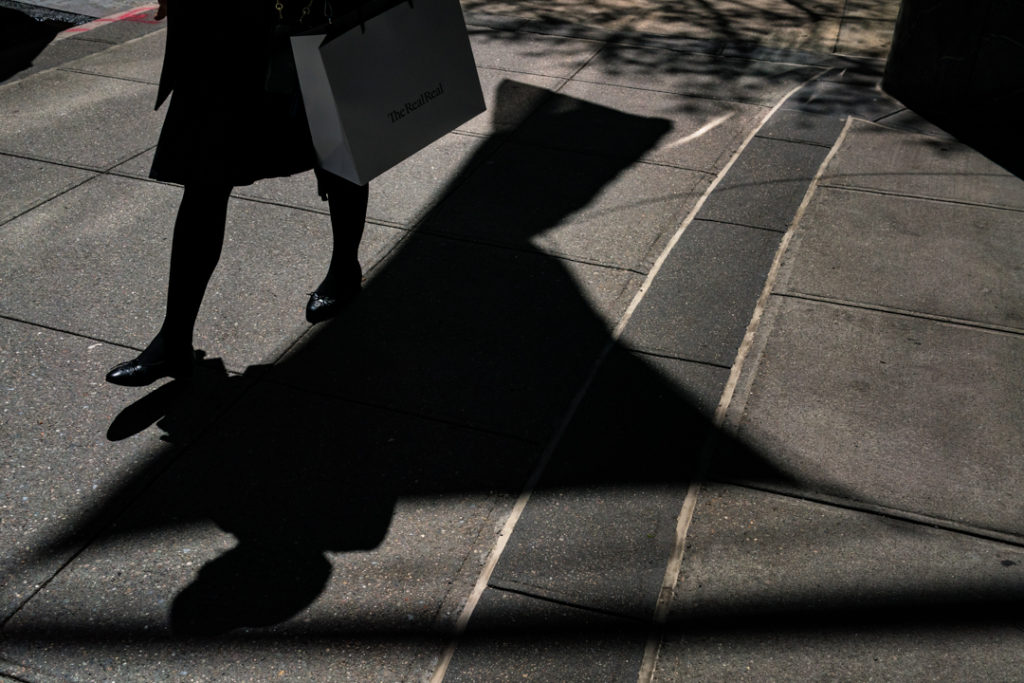
You took photographs in historical periods obviously very different from each other, I mean during the lockdown, or during the presidential elections, or during the BLM protests …Have you ever had the impression that our faces were describing a period of time? I mean, did you find our facial expressions are influenced by the moment in which we live?
In the early days of physical distancing due to the pandemic, I spent my days walking the empty streets of the city to get exercise as well as escape being locked indoors all day. The streets were empty of people and those who ventured out had their faces concealed behind masks. Their body language and movements were cloaked in a sense of fear and suspicion of anyone who dared bridge the distance of safety. I began to focus my attention on the remnants of commerce, including the store windows and the signs used to entice the customers. The image, Woven into the Fabric of Home, was made when I noticed a billboard of a woman with these dark blood red lips, which triggered images of my Mother’s perfect ruby red lips. I photographed the sign with people passing by, but I was unable to make a satisfactory image. I returned a few days later when the sunlight created specular reflections of the buildings across the street enmeshed into the advertisement. I moved up close to the sign and began to photograph the woman in the ad from several different angles. I took a few snaps until I got this image with the resulting reflections inspired by my personal memory. Events and social movements continue to evolve but I have found that it is important to be persistent and follow my own internal cues to find ways to make images that reflect the moment in a way that is authentic. Moving in up close to a subject can dramatically alter the way a facial expression is viewed in an image.
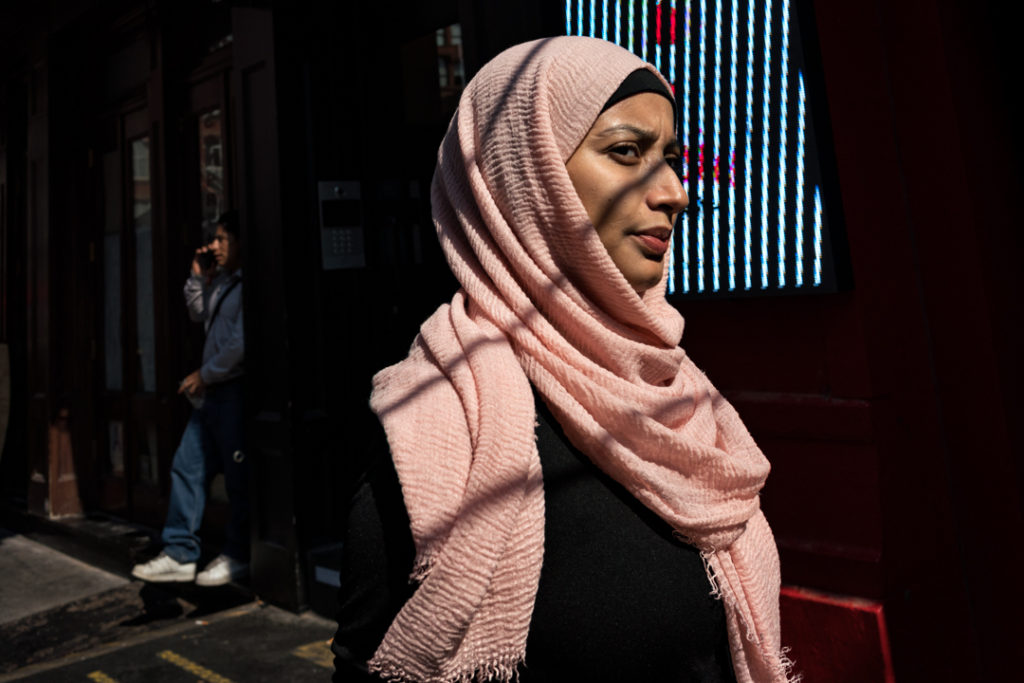
And how do you think your approach to photography has changed during these different historical periods? Did you try to always remain neutral, or did you feel influenced by what was happening?
As the summer of 2020 approached, there were many protests after the shooting of George Floyd. Here in New York, rallies and protests are normally part of the daily life in the city, but these of course were different as they elevated the issues of social inequality to a new level. We were in the midst of this pandemic and the idea of gathering in large groups was unsettling as this was a way to spread the disease. Most people wore masks, but still it was a risk. There were several incidents of vandalism, which created chaos and fear on the streets. I continued to shoot out on the streets, but a new distance was created in many of my images as I found it difficult to get up close to people. I photographed on the edge of several protests, but I found it a bit claustrophobic to get enmeshed in the crowd, which I normally would have relished. I mainly make images without asking permission or cooperation of the subjects, but during the protests, I made a concerted effort to photograph people from behind so as not to reveal the identities of those who participated without their consent.
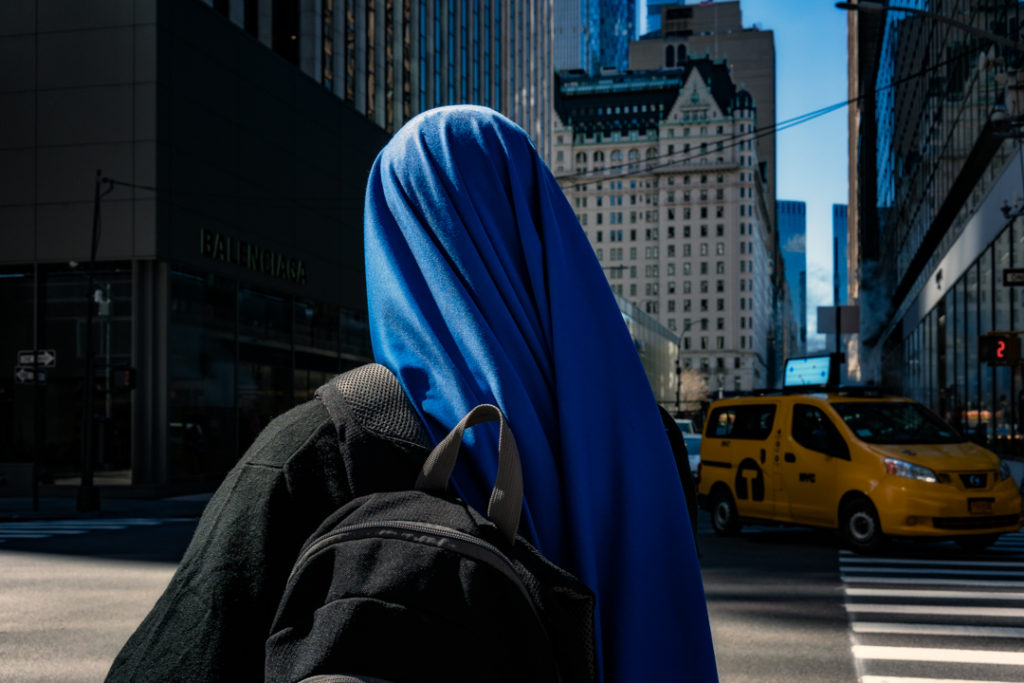
Tell me a little bit about yourself, how did your photographic career started?
I was raised in the suburbs of New Jersey, a short bus ride from New York City. I earned a PhD in Biochemistry from Columbia University, but left the field of molecular biology research and then worked as a manager in Health Care. After leaving research, I took an interest in photography and began taking classes at ICP and other online platforms. I further honed my skills through many photography trips around the world. My photography spans many genres including street photography, landscape photography and long exposure cityscapes. My creative mind is inspired and nourished by the storytelling gleaned from the performing and visual arts. Photography is my attempt at creative expression and initially my approach to the process of shooting, developing and printing resembled my training as a biochemist; to be an observer and a practitioner using a rigorous methodical approach. I am drawn to the streets to construct images through shooting in a trial and error method in order to observe, explore and record the beauty, the rhythm and the drama of everyday life. I continuously work on my ongoing project, Urban Tales. It has evolved to include both candid portraits, scenes on the corner and reflections of city life.
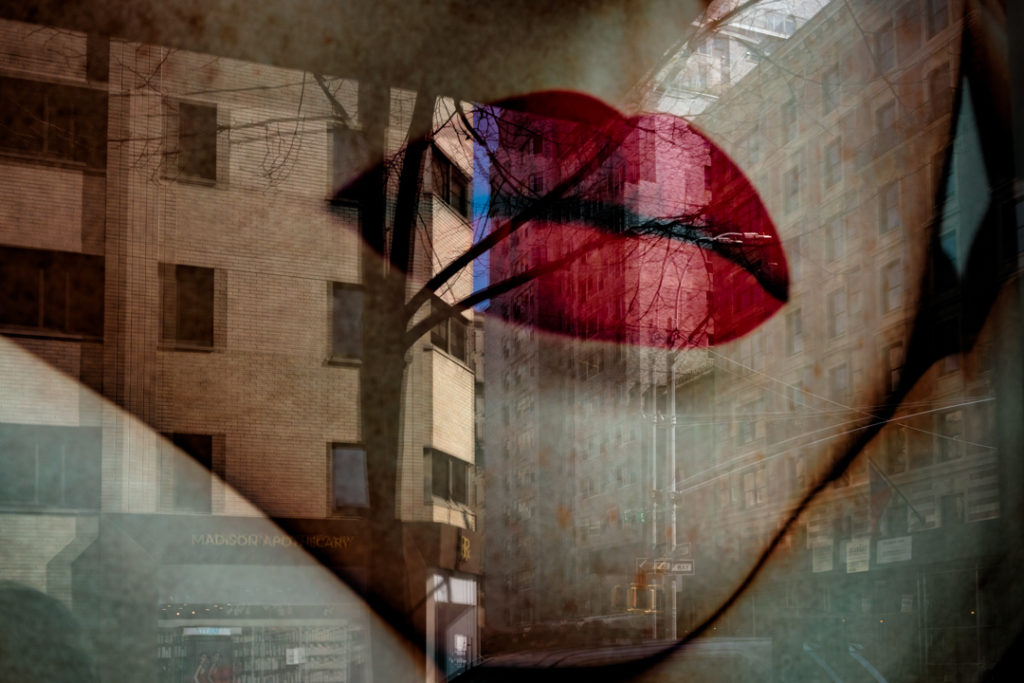 Let’s say 10 years ago a camera happened into your hands, you clicked, you printed out and you said: “wow, that’s cool.” Then, today is your day-off, you look at your camera and … what drives you to go out and take some shots?
Let’s say 10 years ago a camera happened into your hands, you clicked, you printed out and you said: “wow, that’s cool.” Then, today is your day-off, you look at your camera and … what drives you to go out and take some shots?
I am a candid shooter. I prefer to capture transitory scenes on the street without the knowledge of the subject so that the expression, gesture and/or movement are authentic. Sometimes I get caught and a subject will give me that nod of recognition at the time of the shot or after I press the shutter. I go out with no expectations of subject matter other than looking for a moment, which elicits some emotion that I respond to with the subject, it is mainly driven by an internal signal that connects me to the subject or situation. Often, I will shoot a few images and walk on my way, but sometimes I find that a place has great potential and I need the patience to wait around for a scene to evolve. Experimentation keeps me focused and in the moment. I am drawn to creating layered scenes as well as up close candid portraits. I try to respect the subjects that I photograph, taking an image of a fleeting moment, which I observe with no intent other than to memorialize the scene. The resulting photograph is real for the subject/s as well as myself, yet it may not be a truthful representation of what actually occurred. New York has been a place that I can wander the streets relatively inconspicuously and feel as if I am part of a bigger society.

All of the artists I interviewed in recent years, told me: “you must be in trouble with something or someone, to have enough thrust to produce art.” Fine, tell me at least one of your issues.
My personal life has not always been a charmed existence and as a result I have retreated socially from many parts of my earlier life. I have always felt a degree of insecurity in my ability to express myself. Photography has been my means to rediscover the good and bad parts of myself, which I have grown to understand and value. Oftentimes, the resulting candid images that I now make are reminders of parts of my life that are locked away within my mind or those which were simply forgotten.
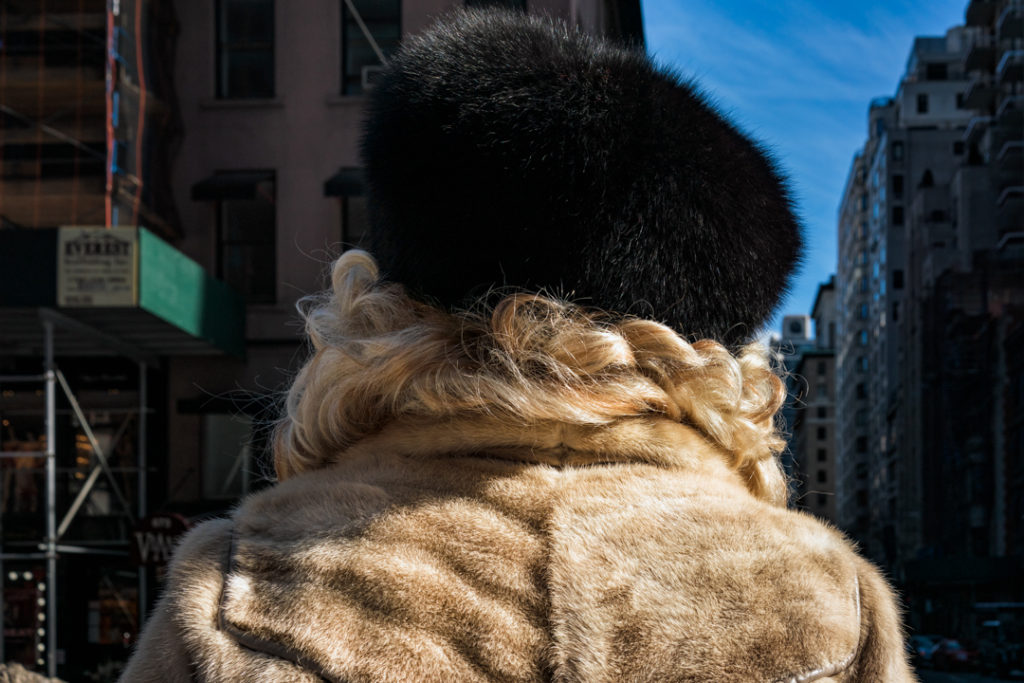
If you had to choose one photographer, who do you think influenced you the most?
I have been influenced and inspired by the work of many photographers including Joel Meyerowitz, Helen Levitt, Saul Leiter, Garry Winogrand, and Alex Webb. Color street photography has been my primary interest for the last several years. The use of color and framing of a street scene by Joel Meyerowitz are an inspiration. The complex structures of the enigmatic moody color photographs of Alex Webb are always in my mind as I try to create a magical moment from the scenes on the street. The “playfulness and poetry” of Helen Levitt’s street scenes are reminders of the imagination both of herself and her subjects. I attempt to replicate some of the poetic joy when I am creating moments on the street. Of course the prolific snapshot like work of Garry Winogrand is an inspiration as he relished the act of photographing everyday life. A quote attributed to him is always floating around in my head. “Photography is not about the thing photographed. It is about how that thing looks photographed.” The ingenuity of Saul Leiter’s colorful serendipitous reflections of city life, has allowed me to expand my creativity. Reflections and mirror images are commonplace in nature, which is full of repetition and redundancy. This is critical to the success of all living species. The idea of framing an image to replicate the redundant, repetitive and complementary aspects of nature is often on my mind when I am observing on the street.
These days in our office turns a trick: “tell me what you would like to achieve in the next 5 months, in the next 5 years, and in the next 10 years.”
My goal for the next 5 months is to continue wandering the streets and making successful images. The observation of people going about their daily life is both a confirmation and a way of enriching my understanding that we as humans all share aspects of these common behaviors. Street photography is my way of connecting with community. I do not think about the next 5 or 10 years as I am enjoying the present moment and I want to be open to embrace new and unforeseen events and opportunities as they evolve. I do hope to begin traveling again to experience and photograph on streets around the world.
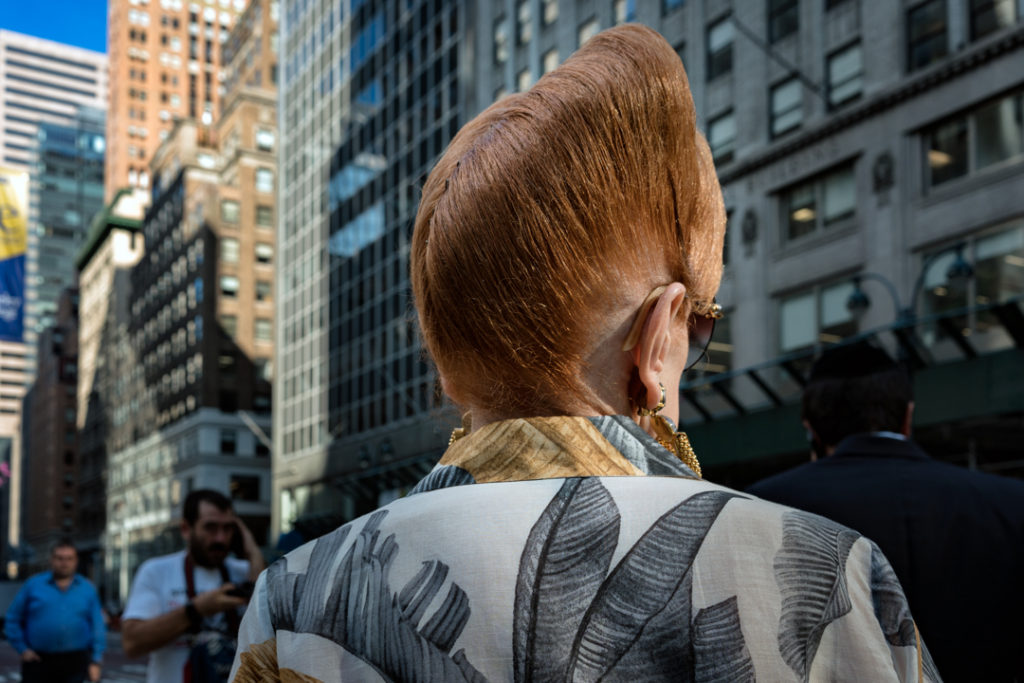
Here we go, Proust Questionnaire. Your favorite virtue?
Dogged Persistence which allows me to be inspired to go out on the streets day after day attempting to explore and practice new ways of seeing and making images.
Your main fault?
Impatience and lack of trust.
Your idea of happiness?
Freely Wandering the streets and observing the simple human moments
If not yourself, who would you be?
I really have no answer for that as I have learned that each one of us humans has flaws and issues along with our virtues. It might be fascinating to walk in the shoes of other successful artists or adventurers, but then I might be enlightened to find that their life on the inside is full of turmoil and not as it appears on the outside.
How you wish to die?
In my sleep dreaming of wandering in a beautiful landscape
What is your present state of mind?
Comfortable, Conscious and Passionate in my pursuit of making images that continue to help me explore my humanity and myself.
Well, I guess our time is running out, let’s leave ourselves with your plans for the future…What’s next for you? What shows or projects do you have planned?
At the moment I will continue to seek ways to get my images seen by a larger audience. An image- Gracefully Aging – that will be part of The Streets exhibit at Praxis Gallery and online Aug 21st, 2021, Juror Layne Kennedy. Series of 4 images that will be part of Women Street Photographers, Paris Exhibition, 59 Rivoli Gallery, Paris, France, July27-August 9, 2021
All photographs by B Jane Levine: Website | Instagram
